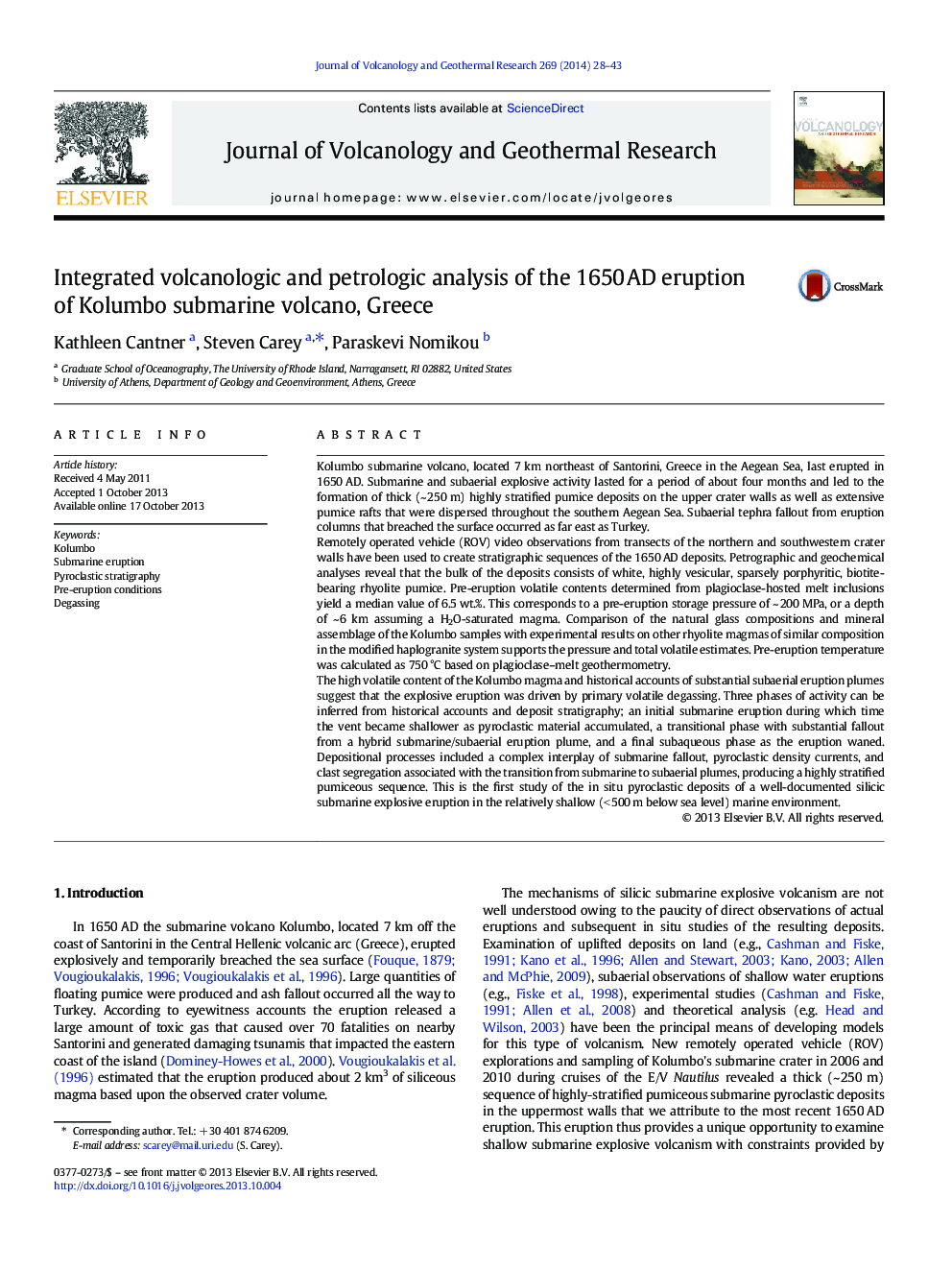| کد مقاله | کد نشریه | سال انتشار | مقاله انگلیسی | نسخه تمام متن |
|---|---|---|---|---|
| 4712487 | 1638352 | 2014 | 16 صفحه PDF | دانلود رایگان |

• The 1650 AD submarine eruption of Kolumbo volcano generated stratified pumice deposits.
• Pumice compositions are rhyolitic and show no systematic change in composition.
• Mixing of mafic magma into the rhyolite may have triggered the eruption.
• Pre-eruption magma storage at 5 km depth and temperature of 750 °C
• Stratified deposits are produced by numerous subaerial and submarine eruption plumes.
Kolumbo submarine volcano, located 7 km northeast of Santorini, Greece in the Aegean Sea, last erupted in 1650 AD. Submarine and subaerial explosive activity lasted for a period of about four months and led to the formation of thick (~ 250 m) highly stratified pumice deposits on the upper crater walls as well as extensive pumice rafts that were dispersed throughout the southern Aegean Sea. Subaerial tephra fallout from eruption columns that breached the surface occurred as far east as Turkey.Remotely operated vehicle (ROV) video observations from transects of the northern and southwestern crater walls have been used to create stratigraphic sequences of the 1650 AD deposits. Petrographic and geochemical analyses reveal that the bulk of the deposits consists of white, highly vesicular, sparsely porphyritic, biotite-bearing rhyolite pumice. Pre-eruption volatile contents determined from plagioclase-hosted melt inclusions yield a median value of 6.5 wt.%. This corresponds to a pre-eruption storage pressure of ~ 200 MPa, or a depth of ~ 6 km assuming a H2O-saturated magma. Comparison of the natural glass compositions and mineral assemblage of the Kolumbo samples with experimental results on other rhyolite magmas of similar composition in the modified haplogranite system supports the pressure and total volatile estimates. Pre-eruption temperature was calculated as 750 °C based on plagioclase–melt geothermometry.The high volatile content of the Kolumbo magma and historical accounts of substantial subaerial eruption plumes suggest that the explosive eruption was driven by primary volatile degassing. Three phases of activity can be inferred from historical accounts and deposit stratigraphy; an initial submarine eruption during which time the vent became shallower as pyroclastic material accumulated, a transitional phase with substantial fallout from a hybrid submarine/subaerial eruption plume, and a final subaqueous phase as the eruption waned. Depositional processes included a complex interplay of submarine fallout, pyroclastic density currents, and clast segregation associated with the transition from submarine to subaerial plumes, producing a highly stratified pumiceous sequence. This is the first study of the in situ pyroclastic deposits of a well-documented silicic submarine explosive eruption in the relatively shallow (< 500 m below sea level) marine environment.
Journal: Journal of Volcanology and Geothermal Research - Volume 269, 1 January 2014, Pages 28–43